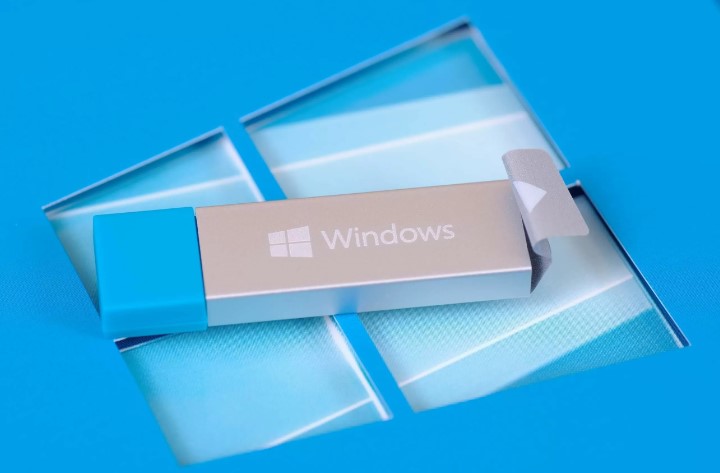How to Fix the “Windows Resource Protection Could Not Perform the Requested Operation” Error

System File Checker (SFC) is one of the most commonly used diagnostic tools on Windows. The tool is a common sight on many tutorials because it lets you fix any system integrity violations with a single command. However, on a bad day, the sfc /scannow command may throw you an error that reads “Windows Resource Protection could not perform the requested operation.”
This anomalistic error has everybody scratching their heads. How do you run diagnostics on a diagnostic tool? Let’s find out.
What Is Windows Resource Protection?
Windows Resource Protection (WRP) is a Windows resource that protects essential system files and folders and registry keys from being replaced. It protects these components to avoid application and OS failures.
Basically, if WRP can’t perform an operation, it’s because it thinks executing the function may make changes that could harm your system. This may or may not be true though. If you’re confident that what you’re doing isn’t going to harm your system (SFC is of course, harmless), go right ahead.
How to Fix the “Windows Resource Protection Could Not Perform the Requested Operation” Error
Fortunately, there are a couple of easy ways to put your quandary to rest. Before we look at the fixes, let’s look at what’s causing the problem:
- The problem is caused by a Windows server that contains an error.
- The SFC /scannow command has malfunctioned.
- The SFC scan is encountering a conflict from some other system component.
As such, we’ll be troubleshooting and fixing each of these individual points. Once done, you’ll hopefully have gotten rid of the error.
1. Use the CHKDSK Tool
What’s a better way to fix a diagnostic tool than with another diagnostic tool? The CHKDSK tool will help you check your HDD’s condition. If the tool finds any errors on the disk, you know what’s causing the problem with the SFC scan.
Press Win + R, type cmd, and press Ctrl + Shift + Enter to launch an elevated Command Prompt. Execute the following command:
chkdsk /r
You’ll likely see a message that says you need to schedule disk checking since the volume is in use by another process. Press Y to schedule disk checking when you next restart the computer.
Restart the computer and the CHKDSK tool will now fix any disk error your system may have. Once it’s complete, try running the sfc /scannow command again.
2. Use the SFC Tool in Safe Mode
If the previous method didn’t work for you, maybe a system component is conflicting with the SFC tool. First, try running the sfc /scannow command in Safe Mode to see if that resolves the issue.
Press Win + R, type msconfig, and press Enter. This should launch the System Configuration window. Switch to the Boot tab and look for Boot options at the bottom left of the window.
Check the box besides Safe boot and select the radio button next to Minimal. Press OK and reboot your PC.
This should help you boot into Sade Mode with only the essential processes running. Try executing the sfc /scannow command now and see if it works.
3. Use the SFC Tool in Windows RE
If for some reason you don’t want to boot into the Safe Mode, you can also use Windows Recovery Environment to run the SFC tool without any conflicting elements running.
To enter Windows RE, you’ll need to go to the Settings app. Press Win + I and navigate to Update Recovery. On the right pane, click on the Restart Now button under the Advanced startup. The computer will then restart and enter Windows RE.
Once you’re in Windows RE, navigate to Troubleshoot > Advanced Options > Command Prompt. Run the SFC command now and see if the command executes successfully.
4. Enable the Windows Modules Installer
The TrustedInstaller service must be running on your system for it to be able to restore missing or corrupted WRP resources since it has full access to WRP files and registry keys. When you run the SFC tool, it triggers the service. However, if you’ve disabled the service, you might run into the aforementioned error.
To check if Windows Modules Installer is disabled, you’ll need to pay a visit to the Services console.
Press Win + R, type services.msc, and press Enter to launch the Services console. Look for Windows Modules Installer and double-click on it to open the service’s properties.
Check the service’s Startup type. If it’s disabled, change it to manual, and press OK.
Try running the sfc /scannow command now to see if the problem persists.
5. Perform an Automatic Repair
At this point, you may want to consider performing an automatic repair to perform a comprehensive check on anything that’s not quite working as it should on your system. Automatic repair doesn’t delete any files or revert any settings to default, so if it doesn’t find anything that needs fixing, it will leave your system just as it was before the scan.
If it finds something that needs fixing, it will either automatically repair it or let you know that it couldn’t fix the problem. Either way, this is certainly worth a shot if none of the previous options worked.
To perform an automatic repair, boot in Windows Recovery Environment (as illustrated in the third fix) and navigate to Troubleshoot > Advanced options > Automatic Repair.
Once the process starts, let it run.
If the Automatic Repair fixes the problem, try running the SFC command after a reboot. However, if no problems were found or if Windows RE couldn’t fix the problem, you may want to consider the last resort.
6. Reinstall Windows
Hopefully, you can now run the sfc /scannow command just fine. If you can’t, you may want to consider reinstalling Windows afresh. It’s a radical step, of course, but if you’ve meaning to do it for a while, now would be a good time.
You’ll get yourself a fresh copy of Windows if you dig that, but since you already have access to the OS, consider taking a backup of your computer so you don’t have to spend a lot of time getting everything in order from scratch after reinstalling Windows.
Can You Run ScanNow Now?
If you encounter the dreaded “Windows Resource Protection Could Not Perform the Requested Operation” error when using /sfc scannow, it can be a confusing task to fix it. Hopefully the above tips will help you get your troubleshooter back into shape.
Read Next
About The Author








